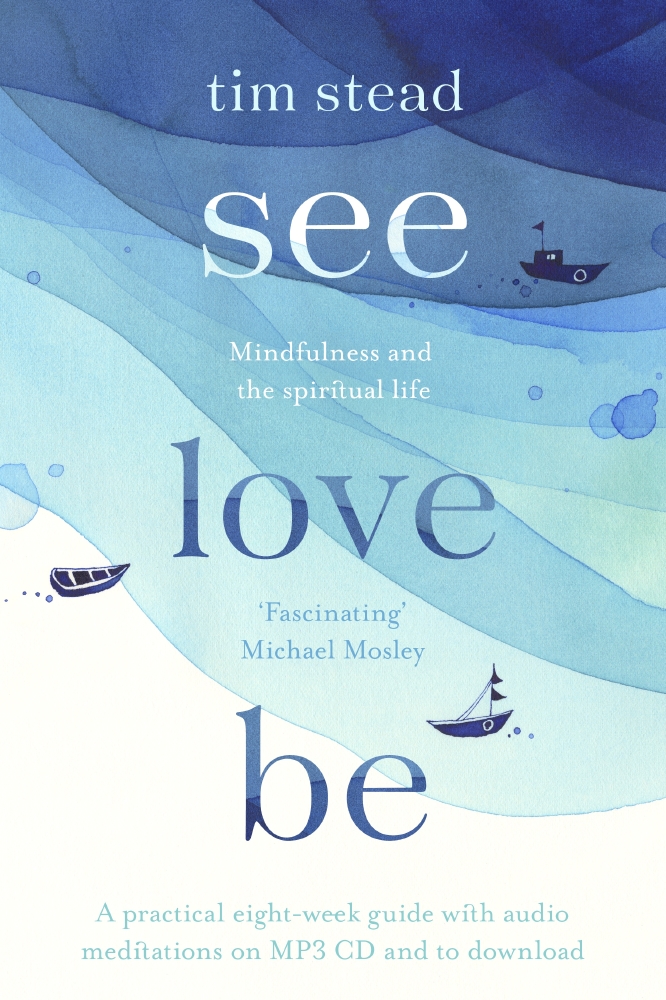Mindfulness is a very ‘in’ word these days. You can get books on the more serious, mindfulness and coping with depression - to the lighter, mindfulness and colouring, eating, walking or cycling. And the list goes on. Mindfulness seems both to have serious clinical value as well as a way of simply enhancing all sorts of aspects of modern life.

Tim Stead
Spirituality, on the other hand, is a word which these days is often treated with some suspicion if not outright rejection, so connected is it in many people’s minds with certain less acceptable aspects of formal religion.
So, what might be a contemporary way of thinking about spirituality and how might it connect with the ever popular world of mindfulness?
Here are five starting points:
- Spirituality in most faith traditions is about ‘seeing’ more deeply and more clearly what is true in life – seeing with the heart as well as the head. And mindfulness is all about the cultivation of ‘awareness’. The thinking and practices of mindfulness are developed in order to help us to become more aware of ourselves, of others and the interactions between the two – so that we can become better – wiser - at responding to what life throws at us.
- True spirituality is not so much about seeking mountain top experiences (although these may happen) but about discovering the real beauty and joy in what otherwise might be seen as the normal, everyday, mundane things of life. Mindfulness teaches us to pay attention – to really pay attention to this moment, this person, this flower, here in this place. And as we do this each and every moment can be transformed into a thing of beauty and wonder.
- Speaking of wonder, this is another constant theme of the spiritual traditions – wonder at nature, wonder at the stars, wonder at existence - the sense that we are part of something so much bigger and more, well, wonder-ful, than just this. ‘Awesome’ is the contemporary word. This sort of awareness can bring a profound sense of meaning to even the simplest of actions or experiences. Mindfulness practice teaches us to take a break from our constant need to plan, to fix, to sort and to solve and simply to step back and allow what is here to be just as it is, just for a moment, so that I can allow wonder to break into my world once again.
- But what about love? Well, yes, of course, all spiritual traditions remind us that love is the heart of it all and that rules and structures are really only there to serve the primary law of love. But how? How do we love? How do we learn to love? Most importantly, how do we love from the heart and not just as part of an exchange of favours? Mindfulness will teach that awareness, paying attention and wonder are all part of this but also there are meditations where you can actually cultivate an attitude of love – all in the comfort and safety of your own home!
- But finally there is something we all long for and, again, the spiritual traditions point us towards, and that is coming to a place of ease with ourselves and our lives: ease of being rather than endless, frenetic doing. And this is where mindfulness finally leads us - not to a point of passivity in the face of the world’s needs and troubles but to a place of deep inner ease which is both an end in itself and a place from which a quiet determination might emerge to do what needs to be done to wake up our world to a better way of being.
Awareness, attention, wonder, love, being. These are some of the things at the heart of the teachings of so many of the great spiritual leaders down the centuries. And all still so relevant today. Mindfulness can help us to engage with them.

Tim stead is a qualified mindfulness teacher and his book ‘SEE, LOVE, BE – mindfulness and the spiritual life’ is published by SPCK on 21st June.

